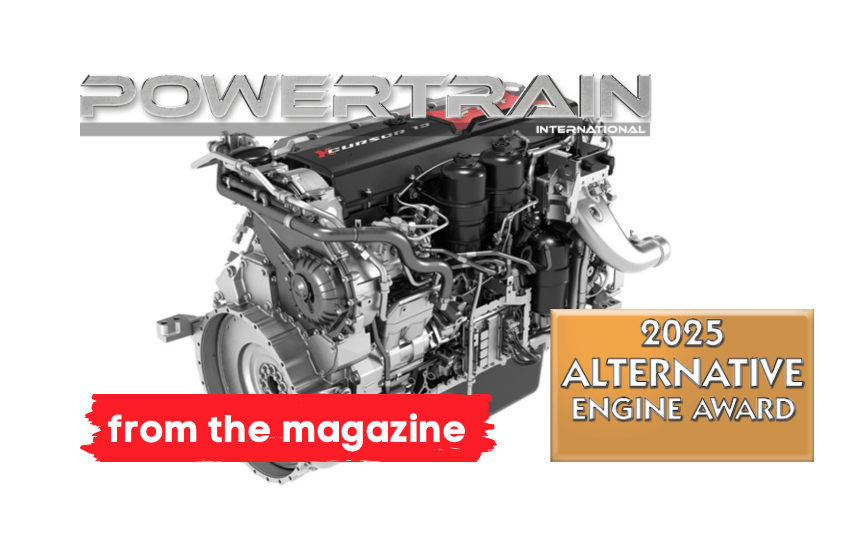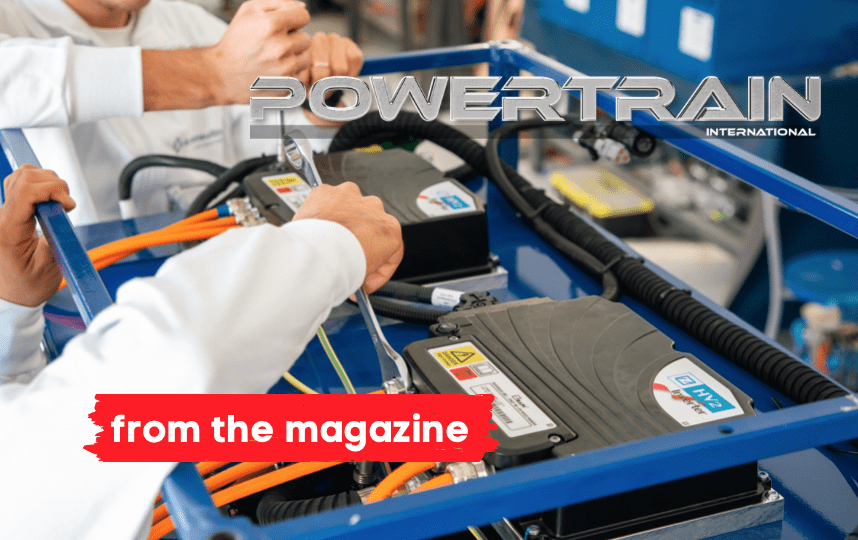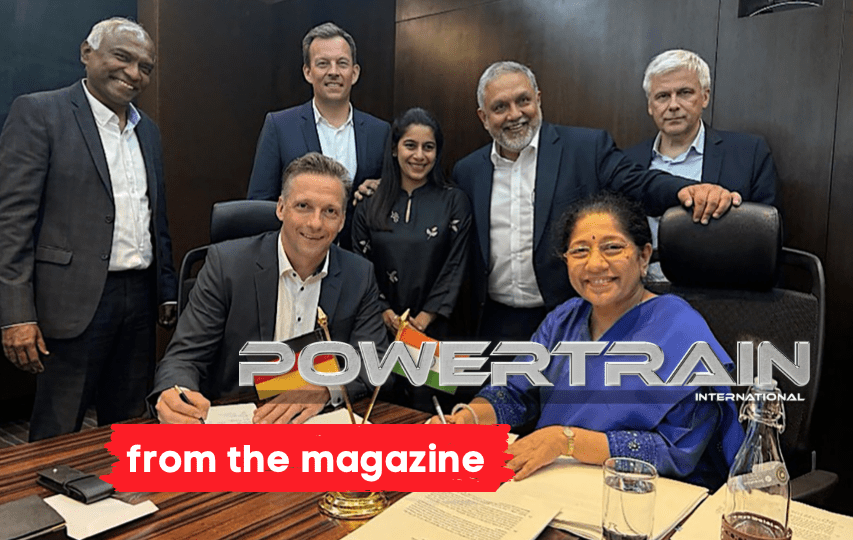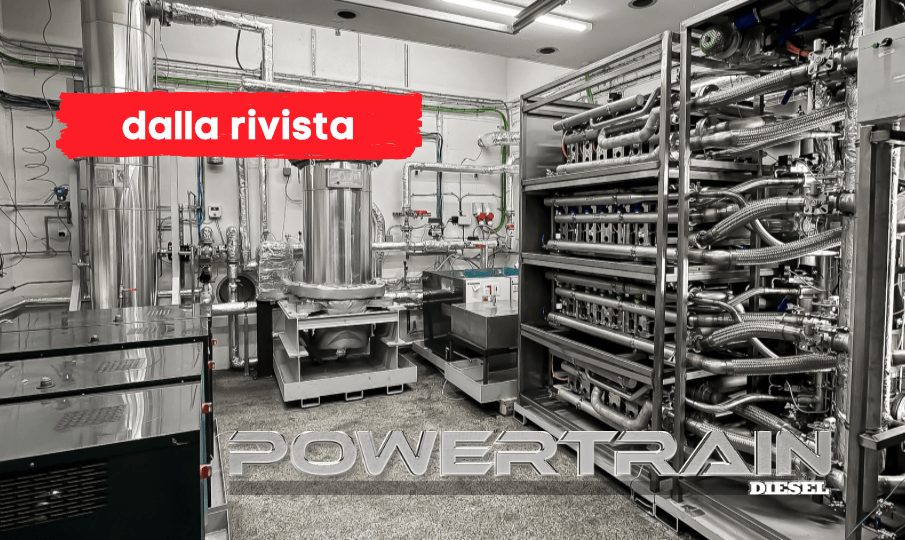AMPA & E-Mobility Taipei: cradle of electronics
Thanks to TAITRA, we visited the Taipei event, where we met Master Bus, Delta Electronics, Shihlin, Foxconn. This is where part of the future of power supply systems for onroad vehicles and, by extension, industrial applications is at stake. Read the full report in the July issue of Powertrain International.
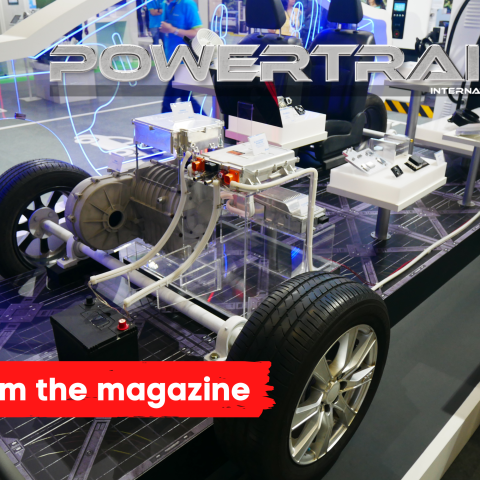
If we were official speakers at TAITRA (Taiwan External Trade Development Council), we would say: “Ladies and gentlemen, welcome to the world’s second largest automotive B2B trade show in Asia”. TAITRA is the presiding mind behind the organization, which this year clustered the Taiwanese mobility industry. Three exhibitions at the Nangang Exhibition Centre: AMPA (Automobile & Motorcycle Parts & Accessories Show), Autotronics and E-Mobility.
Taiwan is the crossroads and cradle of semiconductor and information technology, microchips and battery cells. In short, present and future meet here, and the island still deserves the epithet given to it by Portuguese settlers of Formosa (“beautiful island”). A concept clearly spelled out by James Huang, Chairman of TAITRA, who stated that Taiwan has strong capabilities in information technology and semiconductors, as well as advantages such as flexible manufacturing and complete industrial clusters, making it the ideal choice for global businesses to seek partners and invest in the future mobile industry.
Starting from OEMs’ point of view, we mention Master Bus. Lucky Yu, Planning & Marketing Department Manager, gets right to the heart of Master strategy. In an acronym, LTO. “We use LTO cells from Toshiba, which are the safest batteries in the industry. The chemistry of this material is also more stable than other battery materials, which means that the battery has a very long lifespan. Within the bus life cycle of 10 to 12 years, we don’t need to change the battery. After that, we can use the battery again for energy storage, combined with renewable energy sources like solar panels. Our charging strategy is also different from other electric buses, as we only need 10 to 15 minutes to recharge the bus, which takes place during the 20-30 minute rest period of the driver. This strategy is safer and more efficient. Our suppliers for components like semiconductors and microchips are based in Taiwan.”
We move to technology, in detail, to Gus Technology, a Taiwanese company that specializes in pouch cell production both NCA and LTO.
What are your future plans?
“We are excited to announce that we will soon be opening a new one-gigawatt factory plant in Taiwan, which is located just a 10-minute drive from the airport.”
What is your top priority in battery manufacturing?
“At Gus Technology, safety is our number one priority, especially given the concerns around battery explosions. We place a strong emphasis on ensuring that our LTO cells, which have a life cycle of over 10,000 cycles, are one of the safest cells on the market. They can also be charged in as little as 5 minutes, with no need for active cooling. In addition to LTO cells, we also design our own battery modules and create battery packs with backup and battery management systems. We also produce storage systems, such as a 15kW household energy storage system and a portable 3kW power bank.”
What can you tell us about the life cycle of LTO cells?
“The life cycle of LTO cells is impressive, with the ability to be recharged and discharged more than 10,000 times. This equates to approximately 20-25 years of daily use.”
How does the energy density of LTO cells compare to other batteries?
“While the energy density of LTO cells is slightly lower than other batteries, our Next Generation LTO cells have higher energy densities that are very close to LFP cells.”
Can you explain your battery production process?
“We produce LTO cells, which are then stacked to create battery modules. These modules are then used to make battery packs that include a BMS and modules that can be used directly in EVs. Additionally, we focus on storage systems, as already mentioned, including a 15-kilowatt household energy storage system and a 3-kilowatt portable power bank for camping or night markets.”
From a Taiwanese giant to another one, Delta Electronics, a company with more than 150 offices and 50 factories around the world, including production facilities in India and Europe (Slovakia). They are also building a factory in the US. In addition, they have 73 R&D centers around the world and invest 8% of revenue every year in R&D. Delta is specialized in renewable energy systems, energy storage systems, and energy management software. They have developed a smart microgrid system that helps improve energy efficiency and usage for electric vehicle charging. They also offer an energy storage system that allows users to store renewable energy, which can be used to power electric vehicles or vice versa. “Delta provides electric vehicle chargers,” they said, “and has shipped over two million of them around the world. Delta’s newest model is a 300-kW electric vehicle charger that can charge a vehicle in around 20 minutes and can charge two vehicles at the same time.”
What is an AC charger, and why does it have a lower power output than a DC charger?
“An AC charger is a charger that converts AC power from the grid into DC power that the vehicle’s battery can use. AC chargers have a lower power output than DC chargers because the conversion process requires more energy and time.”
And now, we step to the Shihlin Electric booth. Their expertise lies in transformers, automobile equipment, alternation equipment, and switchgears. In response to the growing demand for electric vehicles, they have expanded into the field of EV solutions. They introduced their business: “Under our brand, Shihlin Green Power, we offer comprehensive solutions for EVs, including solar power charging systems, energy storage, and EV applications.” Then, they added: “Our 150kW 2-in-1 powertrain system offers a 20% reduction in weight and volume compared to the previous generation, while increasing capacity by 10%. It is specifically designed for 3.5- and 5-ton logistic vehicles, and we are expanding our business and R&D efforts to target international markets as well. Another notable product is our 8kW power transistor, which is equivalent to a 125 to 150cc internal combustion engine. This product has been widely adopted by local brands in Taiwan, with over 200,000 units sold since 2017. It is used in various applications, including our Alexa electric scooter, which serves both personal transportation and logistics purposes. We also offer a 50kW powertrain system, primarily used in vehicles above 500cc. This system boasts high torque output for superior climbing force and acceleration.” And, finally: “I am excited to present our EV charging solutions. We have the 7kW AC charger, which is the most commonly used charger in Taiwan. It has obtained certifications in Taiwan, the US, and other countries, offering flexible charging options. We have also the 480kW DC fast charger, featuring a water cooling system. This high-power charger is suitable for supermarkets, large parking lots, and highway rest stops. With its fast-charging capability, your car can be fully charged in just 7 to 10 minutes, providing unparalleled convenience. Both our charging systems are managed by our Cloud Management System (CCMS) and support mobile device payments, ensuring a seamless and user-friendly.”
Last but not least, and never more correctly than in this case, Foxconn. You say Foxconn, you mean a $193.57 billion operating income (in 2021), associated in common sentiment with iPhones. In Taipei they show the all-electric vehicle Model B1, designed for the European market. The vehicle is modular, meaning it can accommodate different sizes of motors. The design of the Model B1 incorporates a black and white color scheme known as 2 CMF (Color Material Finish). The use of controllers includes IBM and zone controllers, connected through automotive Ethernet for signal integration. The need for increased bandwidth in future vehicles is highlighted, and the solution proposed is to use the Internet backbone to connect controllers and transport more signals. During the presentation, they briefly mentioned vertical integration and semiconductor manufacturing.
TO READ THE FULL ARTICLE CLICK HERE OR DOWNLOAD THE PDF






